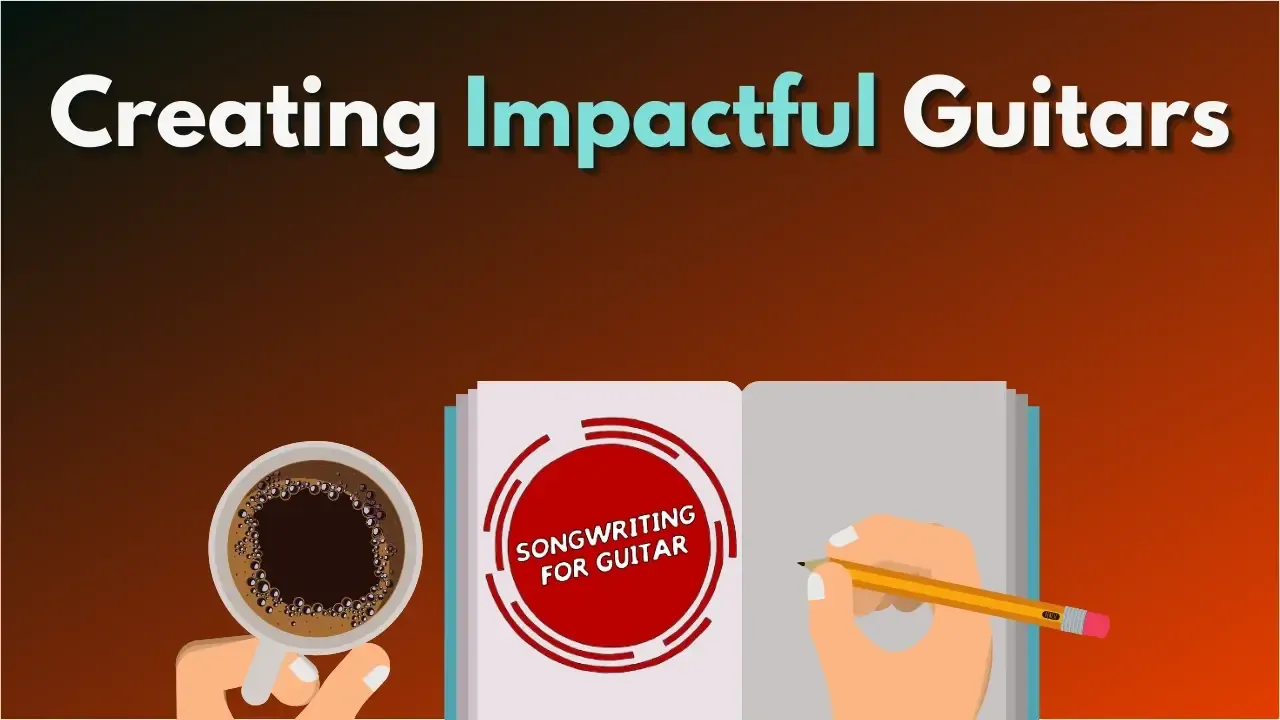Songwriting For Guitar: Creating Impactful guitars
Oct 04, 2021
When setting out to produce and record a track, either for an indie artist, music library cue, or sync brief, I always have a go-to move that gives my guitars an ability to be exactly how I want to hear them.
So you know from the beginning, I don’t go into crazy technical stuff, I’m not an engineer by any means. I’m not thinking or talking about dbS or EQ’ing at a certain frequency.. Etc…I’m talking about a concept you can start applying right now, at any level of playing or writing, and it will work in any DAW, from Garageband to ProTools.
Not expending energy obsessing over the technical aspect, gives me room to focus on the overall vibe, and identify what’s compositionally missing in order to deliver killer arrangements and catchy guitar hooks.
We get to focus on what the ear wants to hear, which gives us room to become an expert listener, and develop as a producer and songwriting guitarist.
So let’s talk about the biggest and most important concept I discovered in my years of producing:
Layering.
More specifically, layering guitars with a very specific goal in mind.
It’s not about having one guitar line doubled and turned up to 11, or becoming the best guitar player in the world with the ability to play the bass line, rhythm guitar and melody line all at once. No. I’m talking about creative thinking with many guitars, serving different purposes.
These guitar parts don’t have to be overly complicated, but they DO need to stand out when it’s necessary, and to be able to serve as a support to the song.
We can do this when we start thinking in these terms:
There are highs.
There are mids.
And there are lows.
It’s incredibly simple and incredibly powerful. You’ve listened to tons of music before, so much so that your ear already recognizes this naturally. So say it with me this time : Highs, mids and lows!
I want you to become an expert listener in this way, and start to understand this from the inside out so you know why something sounds the way it does.
Think of being at a big festival stage, seeing a great big rock band; you might have four guitars and a bass up there in some cases! They’re all covering different parts that contribute to the song, and working together to deliver you a wall of sound! It’s not any different for you and your songs.
So how do they do it? They aren’t all playing the same thing- they have roles to play.
Once we have the concept of highs, mids and lows engrained, we’ll start to recognize where there are gaps, and be able to fill them in, come up with great hooks, strumming patterns or insert simple hits where it’s necessary.
Fill in the gaps
In examining your guitars, often they are too thin. Which means, either there isn’t enough clarity; there’s nothing but low, where it’s inaudible,chunky, muddy, bassy and it’s hard to find definition; Or, we can go to the other end of the spectrum, where there’s so much high end, it feels a little crazy and kind of distracting.
This is where an endless amount of questions can come in. Have you used different voicings? You can go up and down the neck, use your knowledge of inversions and music theory, or use your capo with no shame!
Are you trying to do too much and convoluting it? Keep your guitar lines simple!
Are your layers doing all the same thing or clashing with each other? Clean up the clutter.
Have you used panning to make space?
Have you explored the effects available to you or free plugins in your DAW that can help emphasize your lows, mids, and highs?
We can get into more specifics down the line, but it’s most important to me that you understand this fully and that you have easy methods to reach to.
I’ve been asked, so when do you break your rules and not layer? Well, it’s going to vary from song to song, based on what it needs. But to break the rules, you have to really understand them first and be honest with yourself when listening back. Start knowing your style and recognizing when you were trying to be too clever and too crazy.
Try to start recognizing when there’s likely more than one player on a track. Point out to yourself where and when the high’s are being covered by the guitar, where the strumming pattern is being played etc...
Also please know that this concept doesn’t just apply to guitar and I want you to really run with it if inspired. You know, when this concept hit me, and my recordings were starting to sound bigger and more professional, I realized I could apply that same concept to a ton of different things (percussion, vocal lines etc..).
My focus is on my ears, and finding what I want to hear. It’s gone a long way for me! I’ve even won an Emmy for scoring a commercial, but I STILL don’t think I would get the recording engineer's seal of approval. And that’s totally okay! You know why? It’s because there are people that love that aspect but I get to give myself room to do what I love to do and what I do best. And I get to give my guitars room to shine! So that’s great news for you if you’re just starting to get into this world. You don’t need to do everything all at once, but maybe just a layer at a time.
Go forth and layer, songwriters!
All the best,
Mike Meiers

